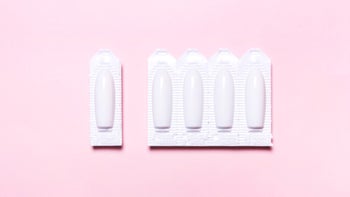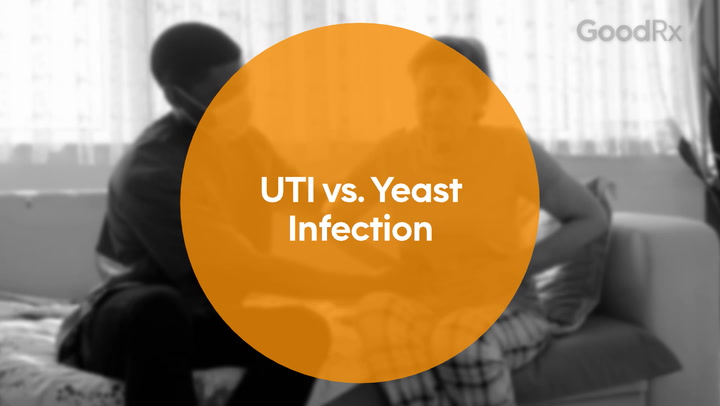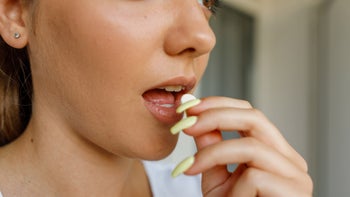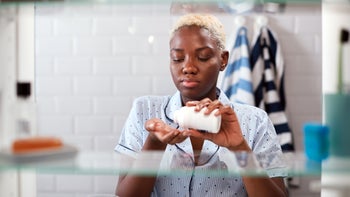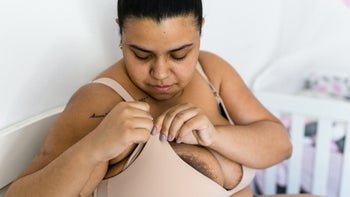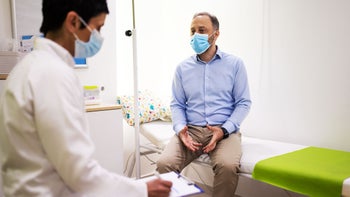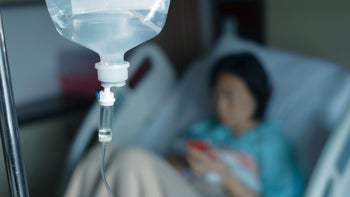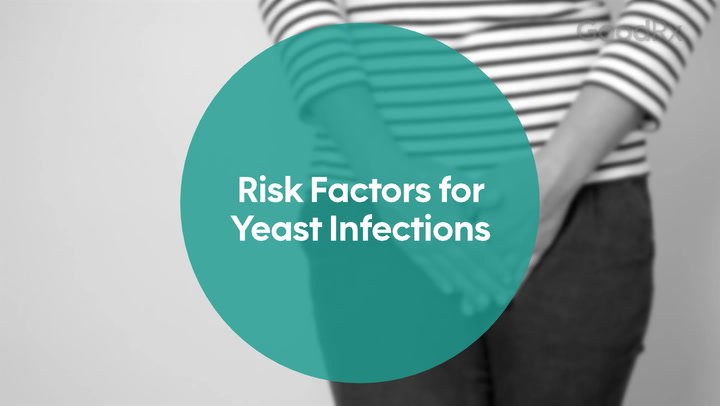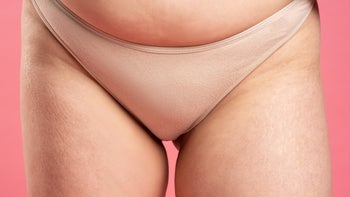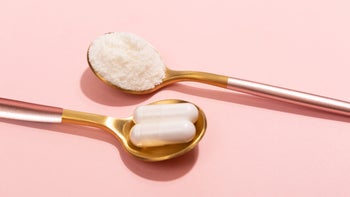
Probiotics for Yeast Infections: Do They Work?
Key takeaways:
Vaginal yeast infections are a common health problem.
Yeast infections are usually treated with antifungal medications.
Probiotics can’t prevent or treat vaginal yeast infections on their own. However, they may be helpful to try — especially as an add-on to antifungal medication.
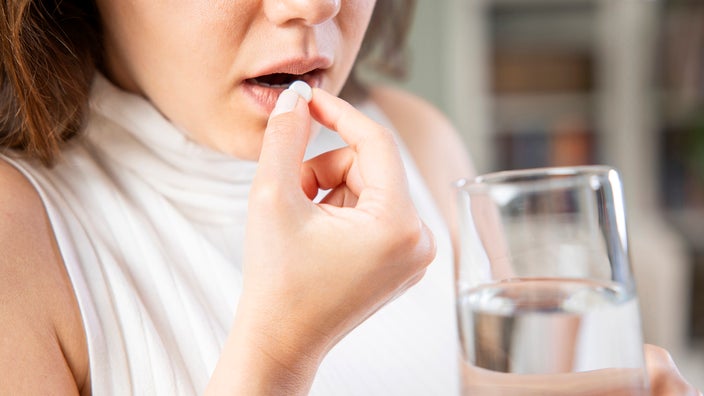
Vaginal yeast infections are a common problem for women. Up to 3 out of 4 women will have a yeast infection at some point in their lives. And most women will have more than one, sometimes even multiple times a year.
Yeast infections are usually caused by the overgrowth of Candida albicans — a type of yeast-like fungi that’s naturally present in your vagina. And though there’s no clear evidence that probiotics can prevent or cure a yeast infection, it’s possible that they could help. That’s because probiotics contain helpful microorganisms that may be able to keep Candida overgrowth in check.
Let’s take a closer look at what causes vaginal yeast infections, as well as how probiotics might potentially help.
Search and compare options
What causes vaginal yeast infections?
Your vagina contains a vibrant web of microorganisms — including bacteria, fungi, and yeast. These organisms, part of what’s known as the microbiome, create an acidic environment within the vagina. This keeps your vagina healthy.
Sometimes, certain circumstances can disrupt your vaginal microbiome. This allows Candida to flourish — and potentially lead to a yeast infection.
Some things can make yeast infections more likely, including:
Pregnancy
Douching
Weakened immune system (for example, due to HIV)
Being sexually active
What are the symptoms of a yeast infection?
Symptoms of a yeast infection include:
Burning
Itching
Swelling
Pain with urination
Pain or burning during sex
Thick, white curd-like discharge
Normal vaginal discharge can be white, but it shouldn’t cause any other symptoms.
What are the best probiotics for women? Here are the top probiotics for women, plus tips on how to choose the right one.
Can you take probiotics and prebiotics together? Learn what the research says about combining probiotics and prebiotics.
What foods have probiotics? Here are 13 popular probiotic-rich foods to consider adding to your diet.
Can probiotics help treat yeast infections?
Probiotics are live microorganisms that may have health benefits when you ingest them. You can get them by eating certain foods or taking a supplement.
It’s possible that probiotics can help with yeast infections by:
Restoring or reinforcing a “healthy” vaginal microbiome
Producing lactic acid, to maintain healthy pH levels
Making it harder for Candida to grow
So far, there’s no proof that probiotics work on their own to treat yeast infections. But there’s some evidence that probiotics could be worth adding on to standard antifungal treatment (more on these below).
In some research studies, taking a probiotic together with antifungal medication helped to cure more yeast infections than antifungals alone. It also made it much less likely that the yeast infection would come back within the next month.
Can probiotics help prevent a yeast infection?
It’s not clear. So far, there isn’t enough evidence to say whether probiotics can prevent yeast infections.
In a few very small studies, eating yogurt or taking Lactobacillus acidophilus daily seemed to help prevent yeast infections. But no large studies have been done yet. And most studies on yeast infections and probiotics have only been short term — meaning they’re not long enough to evaluate prevention.
What are the best probiotics for yeast infections?
Most probiotics used for yeast infections contain one or more Lactobacillus species. These are some of the beneficial types of bacteria that live in your vagina. They help to create an acidic environment, and they may help to prevent yeast overgrowth.
Strains of Lactobacillus that may support vaginal health include:
Lactobacillus crispatus
Lactobacillus jensenii
Lactobacillus rhamnosus
Lactobacillus reuteri
Lactobacillus acidophilus
Another species of yeast known as Saccharomyces cerevisiae may also be helpful. But more research is needed on this and other types.
How do you take probiotics for yeast infections?
Probiotics can be taken either by mouth or inserted into the vagina. Studies have looked at both routes. One doesn’t appear to be better than the other — though taking them orally may be easier for many people.
How do you treat vaginal yeast infections?
The first-choice treatment for yeast infections is usually antifungal medications (azoles). These medications can come as a pill, cream, or vaginal insert. Some medications are over the counter (OTC), while others require a prescription.
OTC options include:
Miconazole (Monistat)
Tioconazole (Vagistat-1, Monistat-1)
Prescription options include:
Butoconazole (Gynazole-1)
Fluconazole (Diflucan)
Before you treat an infection, it’s a good idea to confirm the diagnosis. This is especially true if you’ve never had a yeast infection before, or if your symptoms won't go away. For example, bacterial vaginosis is another common source of vaginal discomfort. It can look and feel like a yeast infection, but it requires different treatment.
How do you stop recurring yeast infections?
Sometimes, yeast infection symptoms come back or never go away completely, even after treatment. This can be frustrating and uncomfortable.
The first step in finding a solution is to get the right diagnosis. A healthcare professional can do some tests to determine the cause. Yeast might be the reason for symptoms like:
Itching
Burning
Pain
Discharge
But it could also be due to something else.
If yeast is to blame, and your symptoms keep coming back, you may need treatment for as long as 6 months. Studies also suggest that adding probiotics to an antifungal medication may make it less likely for your yeast infection to come back in the next 1 to 6 months.
Frequently asked questions
It’s hard to say. Research studies have used doses from around 1 billion CFUs to 10 billion CFUs per day, but there’s no exact “dose” that’s recommended.
If you’re interested in trying probiotics for a yeast infection, talk to your primary care provider or OB-GYN. They can help you choose a good product and advise you on the right dose to try.
For most healthy people, probiotics are safe to try. All the same, talk to your primary care provider before starting one. They can help you understand the pros and cons of taking a probiotic, including how it might affect your vaginal health.
Keep in mind that certain probiotics might not be safe for some people, including people who are immunocompromised or have a central venous catheter.
Other home remedies — like garlic cloves or tea tree oil — haven’t been proven to help with yeast infections. And, in fact, they can irritate your vagina and make your symptoms worse.
But there are many things you can do to prevent yeast infections. These include:
Wearing cotton underwear
Avoiding tight underwear or clothing
Avoiding douching or using perfumed vaginal products
Changing out of wet clothes as soon as possible (like swimsuits or workout gear)
Changing tampons and pads regularly
Avoiding hot tubs and very hot baths
The bottom line
Vaginal yeast infections are typically caused by an overgrowth of Candida albicans. They’re treated with antifungal medication, like Monistat or Diflucan. There’s no evidence that probiotics alone can cure or prevent a yeast infection. However, it’s possible that they can be a helpful add-on to antifungals.
If you’re curious about using probiotics to support your vaginal health, talk to your primary care doctor or OB-GYN. They can help you understand the pros and cons of adding probiotics to your medical care, either in probiotic-rich foods or as a supplement.
Why trust our experts?



References
Gaziano, R., et al. (2020). Saccharomyces cerevisiae-based probiotics as novel antimicrobial agents to prevent and treat vaginal infections. Frontiers in Microbiology.
Hill, C., et al. (2014). The International Scientific Association for Probiotics and Prebiotics consensus statement on the scope and appropriate use of the term probiotic. Nature Reviews Gastroenterology & Hepatology.
Jeng, H., et al. (2020). Treating vaginitis with probiotics in non-pregnant females: A systematic review and meta-analysis. Experimental and Therapeutic Medicine.
Kopicki, R., et al. (2020). Probiotics to augment antifungal treatment of vulvovaginal candidiasis. American Family Physician.
MedlinePlus. (2024). Candida infection of the skin.
National Center for Complementary and Integrative Health. (2019). Probiotics: Usefulness and safety. National Institutes of Health.
Nyirjesy, P. (2014). Management of persistent vaginitis. Obstetrics & Gynecology.
Office on Women’s Health. (2025). Vaginal yeast infections. Office of the Assistant Secretary for Health.
Superti, F., et al. (2020). Warding off recurrent yeast and bacterial vaginal infections: Lactoferrin and lactobacilli. Microorganisms.
Xie, H. Y., et al. (2017). Probiotics for vulvovaginal candidiasis in non‐pregnant women. Cochrane Database of Systematic Reviews.


